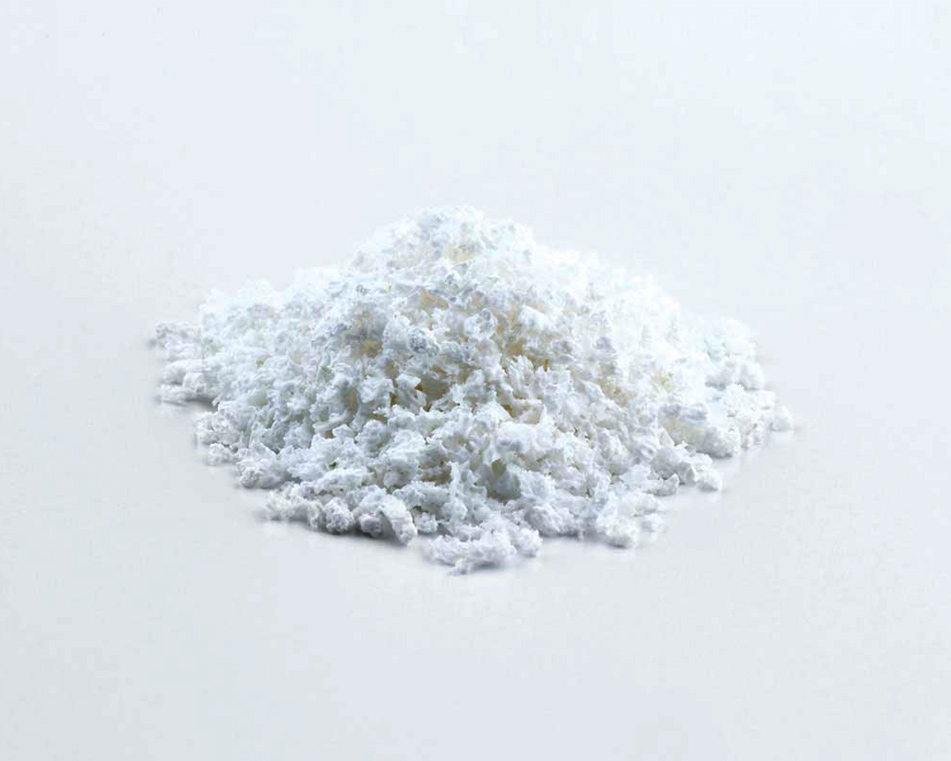
Bone and tissue rebuilding or reconstruction for lost bone and gum volume
If you have lost a tooth it is always accompanied by bone ands tissue loss to some degree.
When replacing teeth with dental implants, we always consider how to minimise this loss and to replace lost bone and tissue as well as the tooth for long term stability.
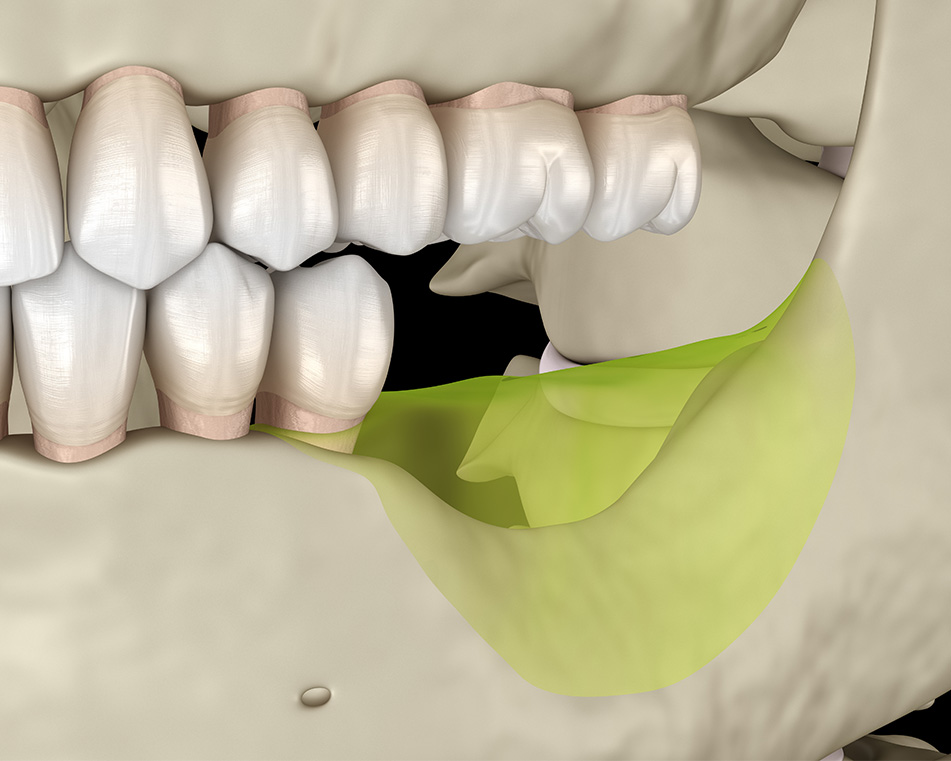
I need a dental implant but do not have enough bone
If you have lost a tooth and the bone around it, it is often possible to rebuild bone and gum housing at the same time as a dental implant is placed. If a large amount of bone has been lost then we normally reconstruct this first before a dental implant can be placed.
During this time, we do not forget about the fact that you need to eat and smile in public. We will ensure that we provide durable provisional teeth so that you can continue to function and look presentable during your bone and gum reconstruction.
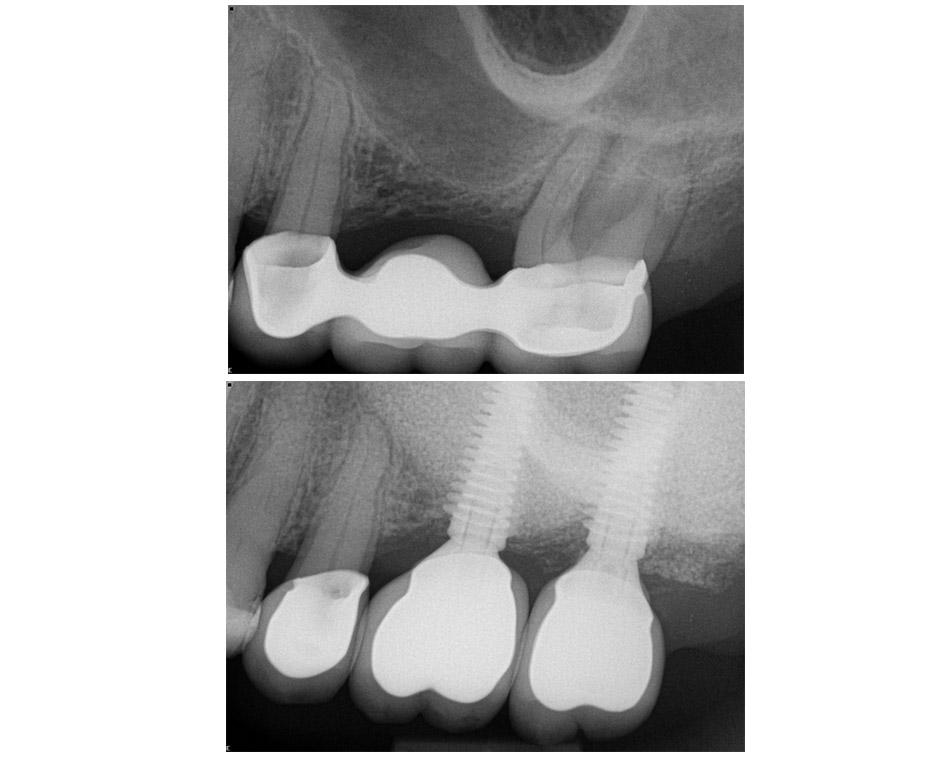
I have lost gum and bone volume due to tooth loss or infection
If you have lost a tooth, or several teeth, and especially if you wear complete dentures, it is likely that a significant volume of bone and gum have also been lost. We have many years of experience and multiple available techniques to rebuild bone and gum tissue to develop enough volume for the placement of dental implants and to restore the natural contours of gums damaged by disease.
The image shows before and after x-rays of a sinus augmentation (or sinus lift or sinus graft) procedure where bone in the back of the upper jaw has been reconstructed after loss of a supporting tooth through infection and where there was insufficient bone under the sinus airspace for implants to be placed.
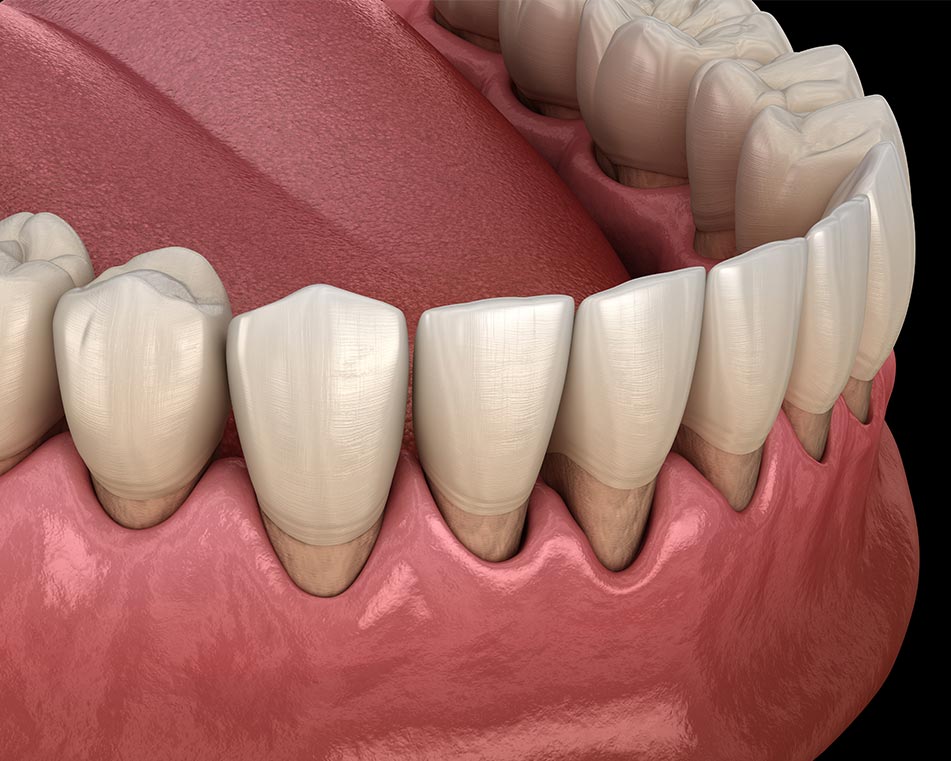
The shape of my gum needs to be rebuilt
If you have lost gum tissue due to recession, gum disease, trauma or loss of teeth, periodontal plastic surgery (gum surgery to restore the shape and thickness of the gums) is available to reverse the damage. This delicate discipline is just one of our areas of expertise for which LCIAD receives referrals from colleagues.
If you feel that your gums are receding or do not like the shape of your gums, please call us to see what we can do for you.
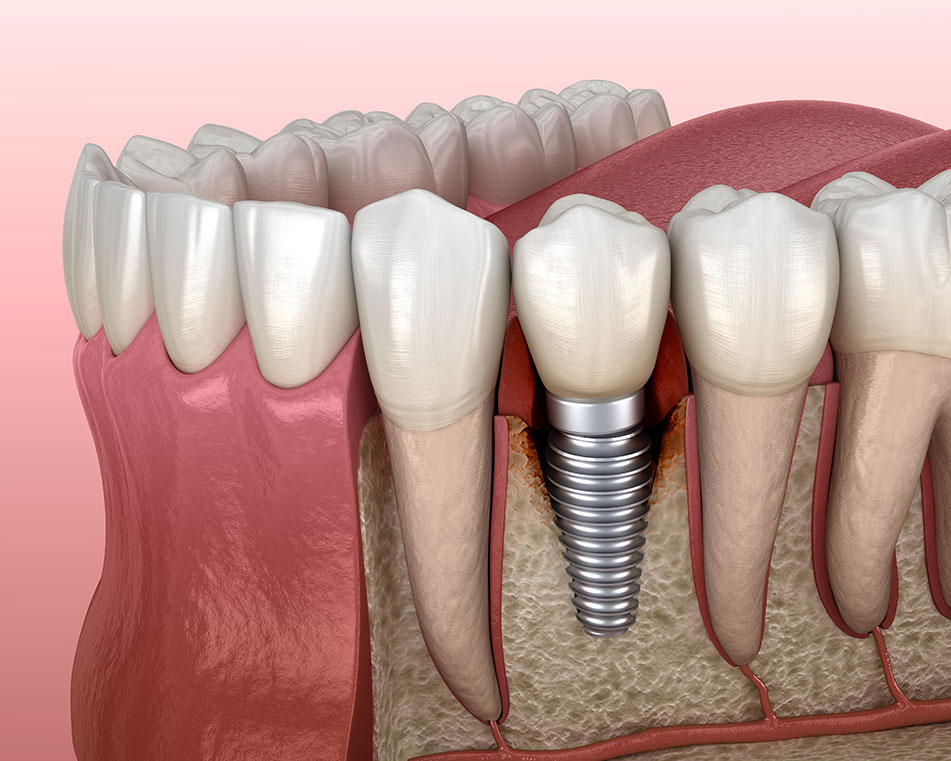
Reparative bone augmentation around diseased implants
We also treat bone loss in areas of infection around teeth (periodontitis) and dental implants (peri-implantitis).
The image shows how bone around an implant can be lost through inflammation.
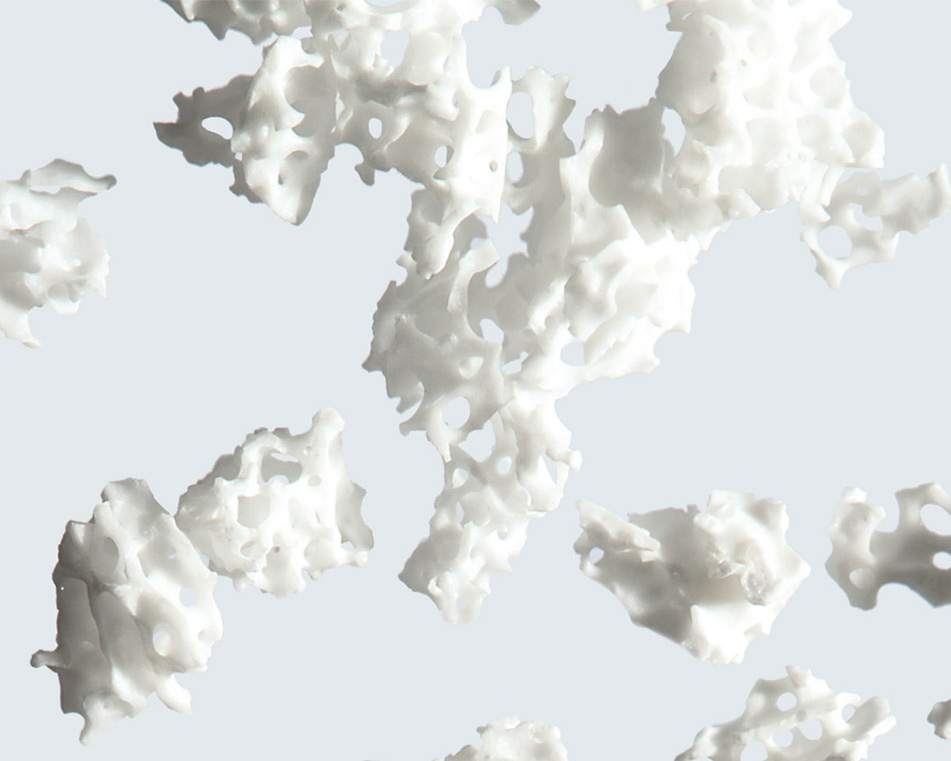
What bone and tissue augmentation (grafting) techniques are available?
We use different techniques to restore volumes of bone and gum that have been lost depending on the shape, dimensions and position of the bone defect and the quality of the gum tissue around it.
A thorough assessment of your case is necessary to ensure that the ideal approach is recommended. At LCIAD Dr Koray Feran, Dr Shiraz Khan, Dr Tania Rafael Garcia and Dr Gustavo Silva are able to provide the following range of bone and soft tissue augmentation graft materials and options:
Particulate bone augmentation
Sinus bone augmentation
Block bone augmentation
Autogenous bone augmentation
Bone ring augmentation
CAD CAM bone blocks (MaxGraft BoneBuilder)
Soft tissue augmentation
Own tissue (connective tissue augmentation and free gingival grafting)
Platelet-Rich Fibrin (PRF)
Collagen products
For Facial aesthetics products please see www.lciadface.co.uk
We use exclusively botiss biomaterials, proprietary and clinically proven bone and tissue augmentation products.

